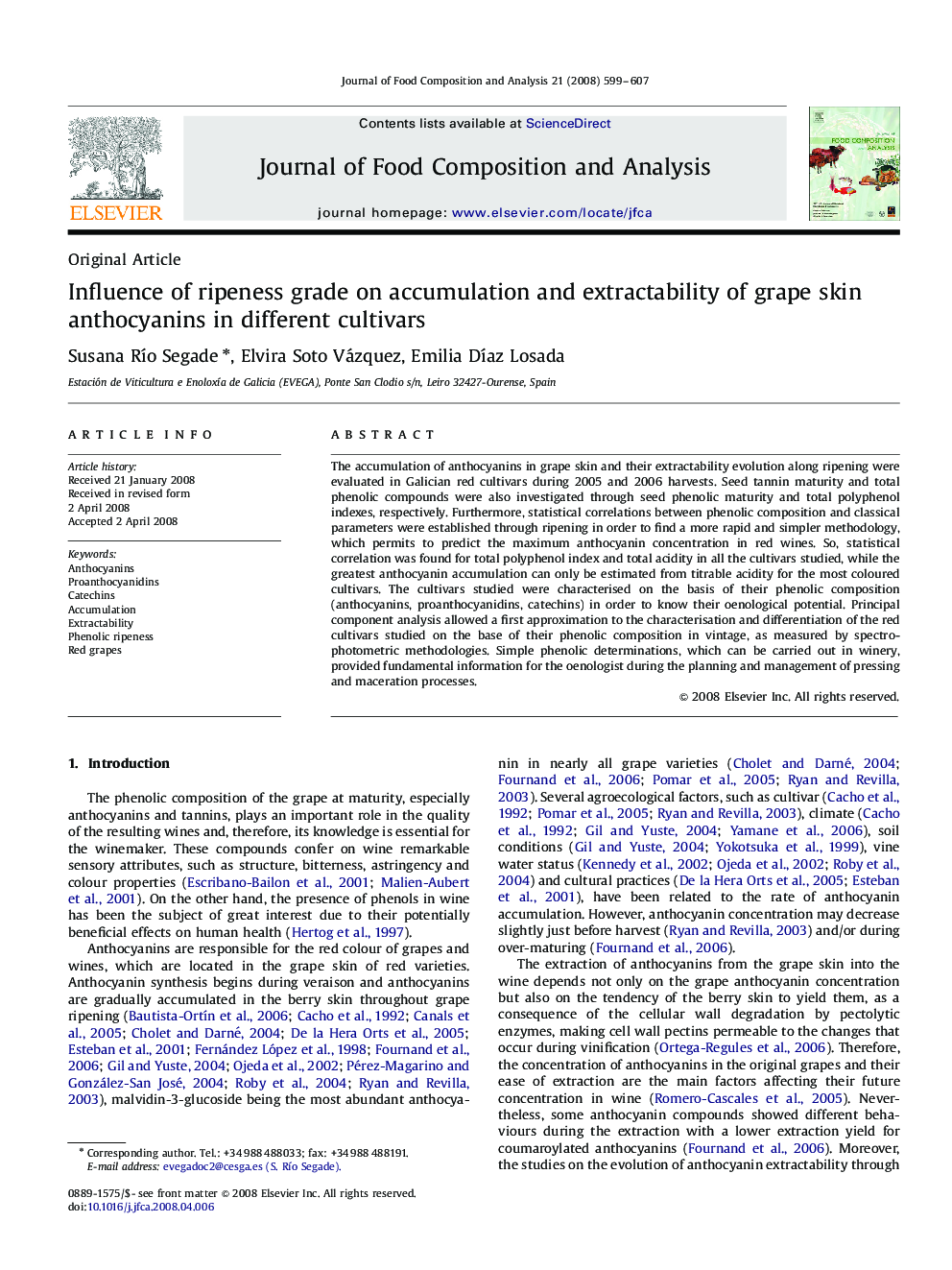| Article ID | Journal | Published Year | Pages | File Type |
|---|---|---|---|---|
| 1218728 | Journal of Food Composition and Analysis | 2008 | 9 Pages |
The accumulation of anthocyanins in grape skin and their extractability evolution along ripening were evaluated in Galician red cultivars during 2005 and 2006 harvests. Seed tannin maturity and total phenolic compounds were also investigated through seed phenolic maturity and total polyphenol indexes, respectively. Furthermore, statistical correlations between phenolic composition and classical parameters were established through ripening in order to find a more rapid and simpler methodology, which permits to predict the maximum anthocyanin concentration in red wines. So, statistical correlation was found for total polyphenol index and total acidity in all the cultivars studied, while the greatest anthocyanin accumulation can only be estimated from titrable acidity for the most coloured cultivars. The cultivars studied were characterised on the basis of their phenolic composition (anthocyanins, proanthocyanidins, catechins) in order to know their oenological potential. Principal component analysis allowed a first approximation to the characterisation and differentiation of the red cultivars studied on the base of their phenolic composition in vintage, as measured by spectrophotometric methodologies. Simple phenolic determinations, which can be carried out in winery, provided fundamental information for the oenologist during the planning and management of pressing and maceration processes.
